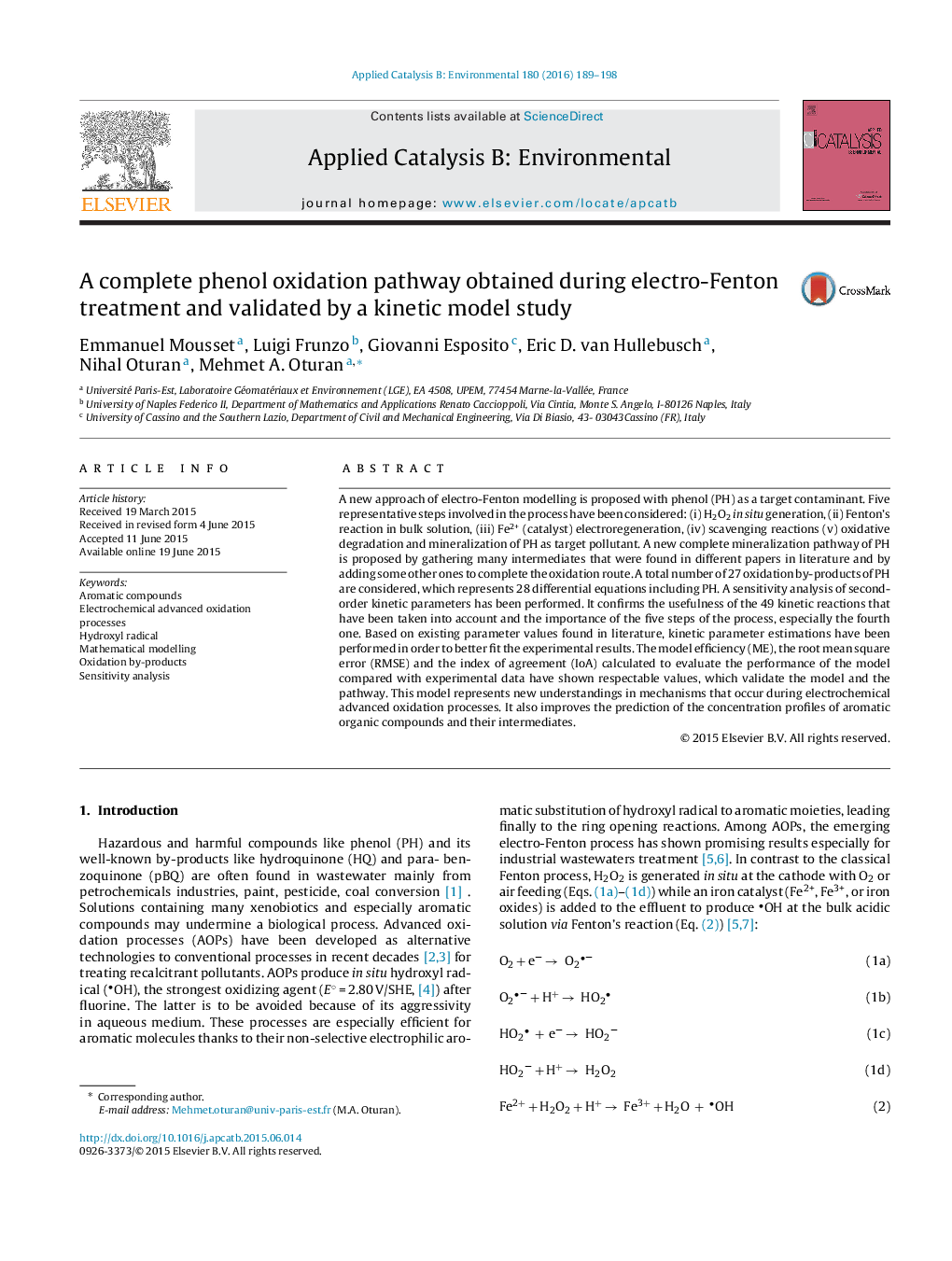| Article ID | Journal | Published Year | Pages | File Type |
|---|---|---|---|---|
| 45234 | Applied Catalysis B: Environmental | 2016 | 10 Pages |
•Electro-Fenton process was modeled to simulate oxidation reaction’s mechanism.•A new complete mineralization pathway of phenol through OH oxidation is suggested.•A total of 28 organic compounds and 49 s order kinetic reactions are considered.•The model could fit well the 10 organic compounds concentration’s evolution.•A sensitivity analysis the importance of scavenging reactions.
A new approach of electro-Fenton modelling is proposed with phenol (PH) as a target contaminant. Five representative steps involved in the process have been considered: (i) H2O2in situ generation, (ii) Fenton’s reaction in bulk solution, (iii) Fe2+ (catalyst) electroregeneration, (iv) scavenging reactions (v) oxidative degradation and mineralization of PH as target pollutant. A new complete mineralization pathway of PH is proposed by gathering many intermediates that were found in different papers in literature and by adding some other ones to complete the oxidation route. A total number of 27 oxidation by-products of PH are considered, which represents 28 differential equations including PH. A sensitivity analysis of second-order kinetic parameters has been performed. It confirms the usefulness of the 49 kinetic reactions that have been taken into account and the importance of the five steps of the process, especially the fourth one. Based on existing parameter values found in literature, kinetic parameter estimations have been performed in order to better fit the experimental results. The model efficiency (ME), the root mean square error (RMSE) and the index of agreement (IoA) calculated to evaluate the performance of the model compared with experimental data have shown respectable values, which validate the model and the pathway. This model represents new understandings in mechanisms that occur during electrochemical advanced oxidation processes. It also improves the prediction of the concentration profiles of aromatic organic compounds and their intermediates.
Graphical abstractFigure optionsDownload full-size imageDownload as PowerPoint slide
